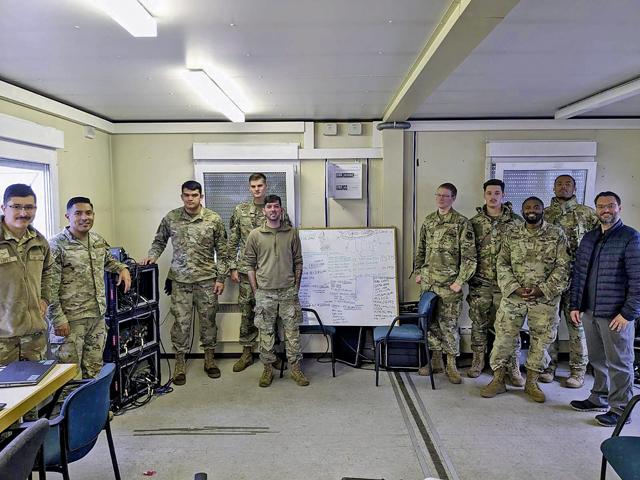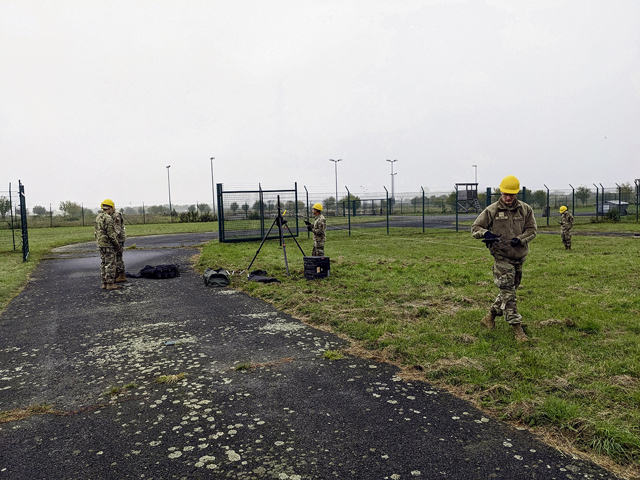
More than a dozen combat communicators from the 1st Combat Communications Squadron participated in Exercise Noble Skywave in Mainz, Oct. 23-27.
Noble Skywave is a multinational high-frequency radio contest hosted by the Canadian Armed Forces. This year, the 1st CBCS competed amid a historically high operations tempo and finished in first place out of 27 teams in Europe, and 15th place out of 409 teams globally.
“As we prepare for near-peer conflict, it is imperative that we train and invest in command and control communications capabilities via a blend of high technology and tried and true core competencies,” U.S. Air Force Lt. Col. Mitch Brown, 1st CBCS commander, said. “HF provides our combat communicators the ability to execute global reach communications for the warfighter without the use of satellites or undersea cables.”

High frequency is designated by the International Telecommunication Union as the range of radio frequency electromagnetic waves (radio waves) between 3 and 30 megahertz.
HF technologies are suitable for long distance communications across intercontinental distances and mountainous terrains which prevent line-of-sight communications, and are jam-resistant — all of which are particularly crucial for military operations in austere environments.
“HF is notoriously difficult to jam and is an art form as much as it is a science,” Brown said. “Through Noble Skywave, our communicators have the opportunity to experiment with antenna configurations, understand atmospherics, and truly become experts in their craft.”
This year’s team was led by Tech. Sgt. Roger Alvarez, 1st CBCS, Non-commissioned officer in charge, Alpha Team. While it’s always fulfilling to win, Alvarez said he views the importance of the competition as a game changer for the opportunity it provides to train his Airmen.
“High Frequency communications is typically learned and practiced in a classroom environment,” Alvarez said. “Noble Skywave Competition uniquely provides our new technicians with invaluable hands-on field experience, an aspect often missing from standard HF courses. Additionally, participants have the chance to hone their skills in global communications by strategically planning interactions throughout various day and night scenarios.”
In this year’s competition, the longest connection the 1st CBCS made was with 8th Signal Regiment from the Royal Australian Army located in Queensland, Australia, approximately 16,122 kilometers away, but the connections go deeper than just making contact on the radio, Alvarez added. The opportunity to practice together and share tactics, techniques and procedures with NATO allies, and partners was paramount and will certainly pay dividends in the future to our national defense and global security.
The 1st Combat Communications Squadron is assigned to the 435th Air Ground Operations Wing at Ramstein Air Base and rapidly deploys, operates and defends tactical communications and airfield systems to the forward edge of the battlespace in support of combined forces air component commander and joint objectives.


